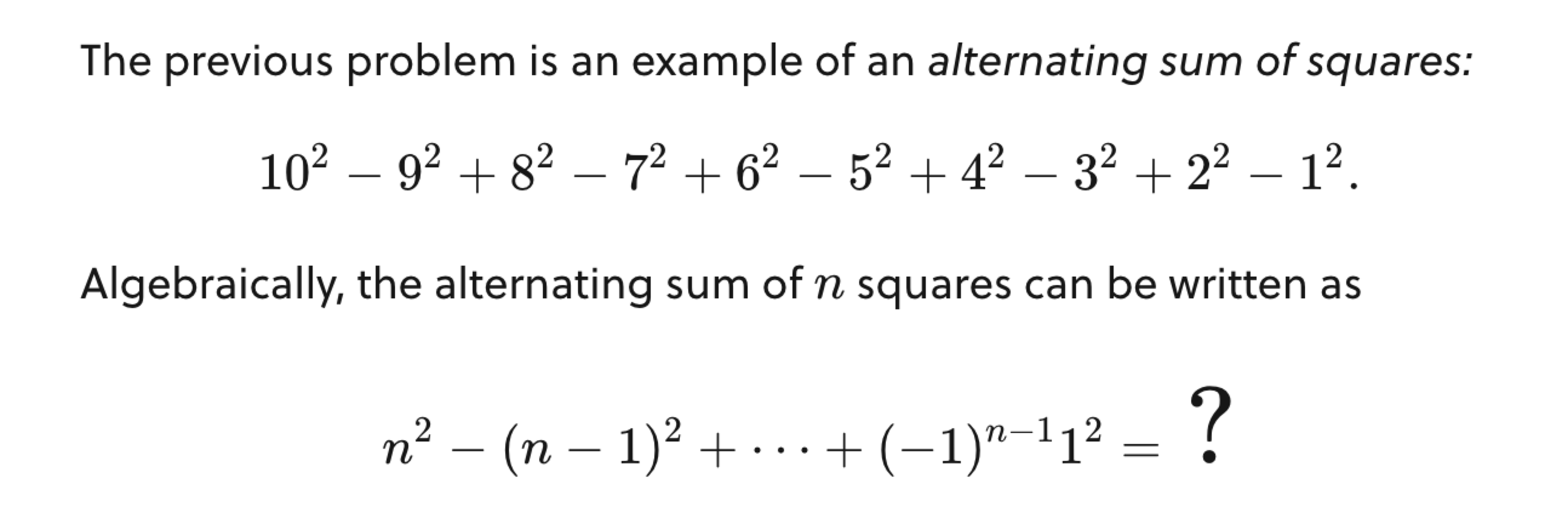alternating sum of squares - help needed
 Hi, I came across this quiz involving alternating sum of squares, and I don't understand how would one depict the 3rd, 4th, element and so on. If we follow the example and the 3rd element is (n-2)square, and the 4th is (n-3) square, when do we know when to stop, and how do we get to -1 at the power "n-1" times 1 square? Thank you!!
Hi, I came across this quiz involving alternating sum of squares, and I don't understand how would one depict the 3rd, 4th, element and so on. If we follow the example and the 3rd element is (n-2)square, and the 4th is (n-3) square, when do we know when to stop, and how do we get to -1 at the power "n-1" times 1 square? Thank you!!
No vote yet
1 vote
Easy Math Editor
This discussion board is a place to discuss our Daily Challenges and the math and science related to those challenges. Explanations are more than just a solution — they should explain the steps and thinking strategies that you used to obtain the solution. Comments should further the discussion of math and science.
When posting on Brilliant:
*italics*or_italics_**bold**or__bold__paragraph 1
paragraph 2
[example link](https://brilliant.org)> This is a quote# I indented these lines # 4 spaces, and now they show # up as a code block. print "hello world"\(...\)or\[...\]to ensure proper formatting.2 \times 32^{34}a_{i-1}\frac{2}{3}\sqrt{2}\sum_{i=1}^3\sin \theta\boxed{123}Comments
We stop when the last number is 12.
When n=1,2,3,…, the value of (−1)n+1 is 1,−1,1,−1,1…, (respectively).
Including (−1) raised to power acts as sign-switcher for terms. When it's raised to even terms, it's positive, but if raised to an odd power, it's negative.